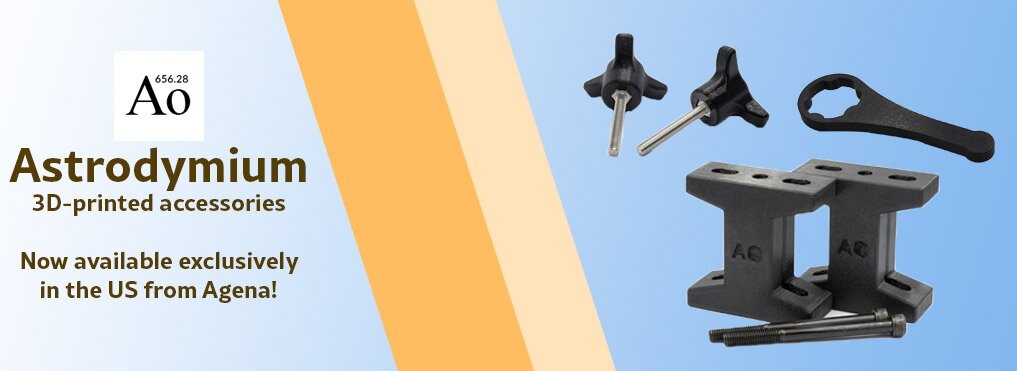
According to the specifications, the William Optics base weighs over 2 lbs! (990 grams) Meanwhile, the iOptron base weighs about 1 lb and the Sky-Watcher base weighs roughly 1.7 lbs. This makes it noticeably heavier and a bit bulkier too. Unlike the Sky-Watcher and iOptron bases, which are mainly plastic, the William Optics base is constructed from a very dense metal of some sort. The base itself is beautifully designed, and comes in three colors – Red, Blue, and Gold. The William Optics base is in a whole new league! The entire base is 100% CNC constructed. I've had multiple students lose their altitude knob, which renders the base completely useless! There is a way to fix this, but you will need a very small allen wrench, which you likely won't have on you when you need it. One problem that I've noticed with both the Sky-Watcher and iOptron bases is that the altitude knob tends to break off. Like the iOptron base though, the azimuth / altitude screws could be more precise. The most noticeable change is that the Sky-Watcher base goes from 0 to 90 degrees! That means it will work anywhere in the world. If you've read my Star Tracker Buying guide, then you know I tend to recommend the Sky-Watcher base, even if you have an iOptron SkyGuider Pro. The Sky-Watcher base has a few improvements over the iOptron base. However, I still get frustrated when I try to make precise adjustments during my polar alignment. I’ve gotten used to the relative inaccuracy of the altitude and azimuth screws, and have learned to work around them. Almost everyone I talk to complains about the imprecise adjustments and flimsy design.
Agena astro pro#
However, if you live closer to the equator, you should consider the Low Latitude base instead.īefore I get into the main review, I want to touch on the default iOptron and Sky-Watcher bases that come with the SkyGuider / SkyTracker Pro and the Star Adventurer / Star Adventurer Mini.

Therefore, the High Latitude base works well for me. For example, I normally take my photos in North America, which ranges from roughly 30 N to 45 N. You should choose the base depending on your shooting location. This base comes in two different configurations – High Latitude (32-59) and Low Latitude (7-34).

While I was reviewing the Space Cat, AgenaAstro was kind enough to send me a William Optics Latitude Base to test out.


 0 kommentar(er)
0 kommentar(er)
